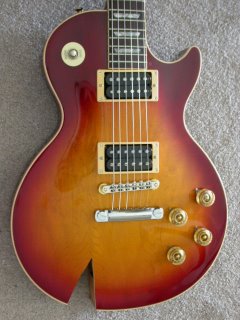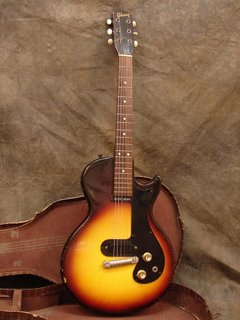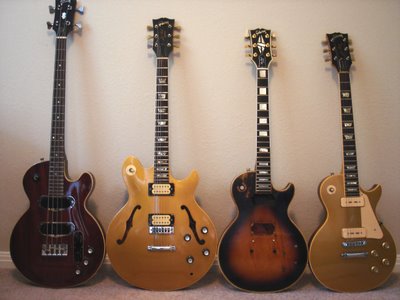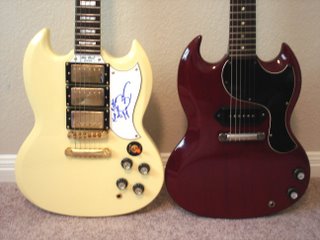Odds and Ends





Here are a few other things that I have accumulated over the years. The first is a Marshall Lead 12. This mini-stack is from the 80's and looks exactly like its larger counterparts, down to the controls and piping. The angled front cabinet has one 10" speaker and it produces 12 solid state watts. It is shown with another mini item, the Epiphone Les Paul Pee Wee. This travel/novelty guitar has a very short scale, but a full width neck. A regular-sized Les Paul is included to show scale. Also shown is a pair of '67 Gibson "free form" speaker cabinets. These 2-10" (each) cabinets were designed to be versatile, they could be stacked as a regular 4-10" cabinet (as in the photo), or used as vertical columns and separated from each other. They have rubber feet on the end as well as one side. This concept never took off, but these do have some redeeming qualities compared to regular cabinets.

































